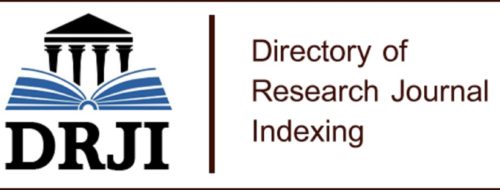Öz
İleri istatistiksel modeller, çeşitli amaçlarla gerçekleştirilen gayrimenkul değerleme çalışmalarında son elli yıldır yaygın olarak kullanılmakta olup, hedonik yaklaşımlar basit ve kolay yorumlanabilir özellikleri sebebiyle bu modeller arasında popüler hale gelmiştir. Ancak konut piyasalarında mekânsal heterojenlik ve mekânsal otokorelasyon durumları söz konusu olabilmektedir ve geleneksel regresyon analizinde bu konumsal etkiler modele yeterince yansıtılamamaktadır. Bu çalışmada Coğrafi Ağırlıklandırılmış Regresyon (CAR) analizi kullanılarak, Ankara ilinin metropoliten alanındaki konut piyasasında mekânsal heterojenlik incelenmiştir. Konut fiyatları ve özelliklerinden oluşan veri seti üzerinde Gauss kernel ağırlık fonksiyonu ve çapraz doğrulama yöntemine dayalı olarak belirlenen değişken (adaptif) bant genişliği kullanılmış, mekânsal etkileri çoğunlukla göz ardı eden en küçük kareler yöntemine dayalı geleneksel regresyon modeline kıyasla CAR modelinin daha başarılı sonuçlar elde ettiği ve konut piyasasında mekânsal heterojenlik olduğu görülmüştür. CAR modelinin konut fiyatlarını açıklama gücünün ve parametre tahminlerinin coğrafi olarak durağan olmadığı anlaşılmıştır. Parametrelerdeki bu değişimler harita üzerinde gösterilerek açıklanmış ve konut fiyatları ile özellikleri arasındaki mekânsal korelasyonlar yardımıyla bu sonuçlar desteklenmiştir.
Anahtar Kelimeler
mekânsal heterojenlik konut piyasası coğrafi ağırlıklandırılmış regresyon
Kaynakça
- Akkoç, U., Akçağlayan, A., & Kargın Akkoç, G. (2021). The impacts of oil price shocks in Turkey: sectoral evidence from the FAVAR approach. Economic Change and Restructuring, 54(4), 1147-1171.
- Bidanset, P., McCord, M., Lombard, J. A., Davis, P., & McCluskey, W. (2018). Accounting for locational, temporal, and physical similarity of residential sales in mass appraisal modeling: the development and application of geographically, temporally, and characteristically weighted regression. Journal of Property Tax Assessment and Administration, 14(2), 5-13.
- Bidanset, P. E., & Lombard, J. R. (2014). Evaluating spatial model accuracy in mass real estate appraisal: A comparison of geographically weighted regression and the spatial lag model. Cityscape, 16(3), 169-182.
- Bidanset, P. E., Lombard, J. R., Davis, P., McCord, M., & McCluskey, W. J. (2017). Further evaluating the impact of kernel and bandwidth specifications of geographically weighted regression on the equity and uniformity of mass appraisal models. In Advances in Automated Valuation Modeling (pp. 191-199): Springer.
- Bitter, C., Mulligan, G. F., & Dall’erba, S. (2007). Incorporating spatial variation in housing attribute prices: a comparison of geographically weighted regression and the spatial expansion method. Journal of geographical systems, 9(1), 7-27.
- Brunsdon, C., Fotheringham, A. S., & Charlton, M. E. (1996). Geographically weighted regression: a method for exploring spatial nonstationarity. Geographical analysis, 28(4), 281-298.
- Bujanda, A., & Fullerton, T. M. (2017). Impacts of transportation infrastructure on single-family property values. Applied Economics, 49(51), 5183-5199.
- Chica-Olmo, J. (2007). Prediction of housing location price by a multivariate spatial method: Cokriging. Journal of Real Estate Research, 29(1), 91-114.
- Crawford, T. W. (2009). Scale Analytical. In R. Kitchin & N. Thrift (Eds.), International encyclopedia of human geography (pp. 29-36): Elsevier.
- Davis, P., Bidanset, P., McCord, M., & Cusack, M. (2019). Nationwide Mass Appraisal Modeling in China: Feasibility Analysis for Scalability Given Ad Valorem Property Tax Reform. Working Paper WP20PD1, Lincoln Institute of Land Policy.
- Fotheringham, A. S., Brunsdon, C., & Charlton, M. (2000). Quantitative geography: perspectives on spatial data analysis: Sage.
- Fotheringham, A. S., Brunsdon, C., & Charlton, M. (2003). Geographically weighted regression: the analysis of spatially varying relationships: John Wiley & Sons.
- Fotheringham, A. S., Charlton, M. E., & Brunsdon, C. (1998). Geographically weighted regression: a natural evolution of the expansion method for spatial data analysis. Environment and planning A, 30(11), 1905-1927.
- Fotheringham, A. S., Crespo, R., & Yao, J. (2015). Exploring, modelling and predicting spatiotemporal variations in house prices. The Annals of Regional Science, 54(2), 417-436.
- Fullerton, T. M., & Bujanda, A. (2018). Commercial property values in a border metropolitan economy. Asia-Pacific Journal of Regional Science, 2(2), 337-360.
- Gloudemans, R. J., & Almy, R. R. (2011). Fundamentals of mass appraisal: International Association of Assessing Officers.
- Grover, R. (2016). Mass valuations. Journal of Property Investment & Finance, Emerald Group Publishing, Vol. 34(2), pages 191-204.
- Guo, L., Ma, Z., & Zhang, L. (2008). Comparison of bandwidth selection in application of geographically weighted regression: a case study. Canadian Journal of Forest Research, 38(9), 2526-2534.
- Hanink, D. M., Cromley, R. G., & Ebenstein, A. Y. (2012). Spatial variation in the determinants of house prices and apartment rents in China. The Journal of Real Estate Finance and Economics, 45(2), 347-363.
- Hu, L., He, S., Han, Z., Xiao, H., Su, S., Weng, M., & Cai, Z. (2019). Monitoring housing rental prices based on social media: An integrated approach of machine-learning algorithms and hedonic modeling to inform equitable housing policies. Land Use Policy, 82, 657-673.
- Huang, B., Wu, B., & Barry, M. (2010). Geographically and temporally weighted regression for modeling spatio-temporal variation in house prices. International Journal of Geographical Information Science, 24(3), 383-401.
- Matysiak, G. A. (2017). The accuracy of automated valuation models (AVMs). Report for TEGoVA.
- Militino, A. F., Ugarte, M. D., & Garcia-Reinaldos, L. (2004). Alternative models for describing spatial dependence among dwelling selling prices. The Journal of Real Estate Finance and Economics, 29(2), 193-209.
- Mooya, M. M. (2016). Real Estate Valuation Theory: Springer.
- Morali, O., & Yilmaz, N. (2020). Spatial Heterogeneity in Istanbul Housing Market: A Geographically Weighted Approach. Journal of Economics Finance and Accounting, 7(4), 298-307.
- Páez, A., Long, F., & Farber, S. (2008). Moving window approaches for hedonic price estimation: an empirical comparison of modelling techniques. Urban Studies, 45(8), 1565-1581.
- RICS. (2017). The Future of Valuations: The relevance of real estate valuations for institutional investors and banks – views from a European expert group, London, UK. Retrieved from RICS.
- Sayın, Z. M. (2021). House price dynamics in izmir's neighborhoods: A comprehensive approach, Unpublished master's thesis,. Izmir Institute of Technology,
- Schulz, R., Wersing, M., & Werwatz, A. (2014). Automated valuation modelling: a specification exercise. Journal of Property Research, 31(2), 131-153.
- Sirmans, S., Macpherson, D., & Zietz, E. (2005). The composition of hedonic pricing models. Journal of Real Estate Literature, 13(1), 1-44.
- Sisman, S., & Aydinoglu, A. (2022). A modelling approach with geographically weighted regression methods for determining geographic variation and influencing factors in housing price: A case in Istanbul. Land Use Policy, 119, 106183.
- Soltani, A., Pettit, C. J., Heydari, M., & Aghaei, F. (2021). Housing price variations using spatio-temporal data mining techniques. Journal of Housing and the Built Environment, 36(3), 1199-1227.
- Steurer, M., Hill, R. J., & Pfeifer, N. (2021). Metrics for evaluating the performance of machine learning based automated valuation models. Journal of Property Research, 1-31.
- Tchuente, D., & Nyawa, S. (2021). Real estate price estimation in French cities using geocoding and machine learning. Annals of Operations Research, 1-38.
- Tobler, W. R. (1970). A computer movie simulating urban growth in the Detroit region. Economic geography, 46(sup1), 234-240.
- Wang, C.-H., & Chen, N. (2020). A geographically weighted regression approach to investigating local built-environment effects on home prices in the housing downturn, recovery, and subsequent increases. Journal of Housing and the Built Environment, 35(4), 1283-1302.
- Yu, D. (2007). Modeling owner-occupied single-family house values in the city of Milwaukee: A geographically weighted regression approach. GIScience & Remote Sensing, 44(3), 267-282.
Öz
Advanced statistical models have been widely used in real estate valuations for various purposes over the last fifty years, and hedonic approaches with their simple and easy interpretable features are still the most popular among these models. However, spatial heterogeneity and spatial autocorrelation are the two major features of the housing markets, and traditional regression cannot reflect these locational effects into the model sufficiently. This study employs a Geographically Weighted Regression (GWR) model to explore the spatial heterogeneity in the metropolitan area housing market in the city of Ankara. By applying a Gaussian kernel weighting function with adaptive bandwidth based on cross-validation approach on a house listing dataset, it is found that the GWR fit the data better than the traditional ordinary least squares regression which mostly ignore the spatial effects, and there is spatial heterogeneity in the housing market. Explanatory power of the GWR model and parameter estimations are non-stationary over the geographical area. The variations in the coefficients of the variables are depicted on the map and is supported with the spatial correlations between the housing prices and attributes as well.
Anahtar Kelimeler
spatial heterogeneity housing market geographically weighted regression
Kaynakça
- Akkoç, U., Akçağlayan, A., & Kargın Akkoç, G. (2021). The impacts of oil price shocks in Turkey: sectoral evidence from the FAVAR approach. Economic Change and Restructuring, 54(4), 1147-1171.
- Bidanset, P., McCord, M., Lombard, J. A., Davis, P., & McCluskey, W. (2018). Accounting for locational, temporal, and physical similarity of residential sales in mass appraisal modeling: the development and application of geographically, temporally, and characteristically weighted regression. Journal of Property Tax Assessment and Administration, 14(2), 5-13.
- Bidanset, P. E., & Lombard, J. R. (2014). Evaluating spatial model accuracy in mass real estate appraisal: A comparison of geographically weighted regression and the spatial lag model. Cityscape, 16(3), 169-182.
- Bidanset, P. E., Lombard, J. R., Davis, P., McCord, M., & McCluskey, W. J. (2017). Further evaluating the impact of kernel and bandwidth specifications of geographically weighted regression on the equity and uniformity of mass appraisal models. In Advances in Automated Valuation Modeling (pp. 191-199): Springer.
- Bitter, C., Mulligan, G. F., & Dall’erba, S. (2007). Incorporating spatial variation in housing attribute prices: a comparison of geographically weighted regression and the spatial expansion method. Journal of geographical systems, 9(1), 7-27.
- Brunsdon, C., Fotheringham, A. S., & Charlton, M. E. (1996). Geographically weighted regression: a method for exploring spatial nonstationarity. Geographical analysis, 28(4), 281-298.
- Bujanda, A., & Fullerton, T. M. (2017). Impacts of transportation infrastructure on single-family property values. Applied Economics, 49(51), 5183-5199.
- Chica-Olmo, J. (2007). Prediction of housing location price by a multivariate spatial method: Cokriging. Journal of Real Estate Research, 29(1), 91-114.
- Crawford, T. W. (2009). Scale Analytical. In R. Kitchin & N. Thrift (Eds.), International encyclopedia of human geography (pp. 29-36): Elsevier.
- Davis, P., Bidanset, P., McCord, M., & Cusack, M. (2019). Nationwide Mass Appraisal Modeling in China: Feasibility Analysis for Scalability Given Ad Valorem Property Tax Reform. Working Paper WP20PD1, Lincoln Institute of Land Policy.
- Fotheringham, A. S., Brunsdon, C., & Charlton, M. (2000). Quantitative geography: perspectives on spatial data analysis: Sage.
- Fotheringham, A. S., Brunsdon, C., & Charlton, M. (2003). Geographically weighted regression: the analysis of spatially varying relationships: John Wiley & Sons.
- Fotheringham, A. S., Charlton, M. E., & Brunsdon, C. (1998). Geographically weighted regression: a natural evolution of the expansion method for spatial data analysis. Environment and planning A, 30(11), 1905-1927.
- Fotheringham, A. S., Crespo, R., & Yao, J. (2015). Exploring, modelling and predicting spatiotemporal variations in house prices. The Annals of Regional Science, 54(2), 417-436.
- Fullerton, T. M., & Bujanda, A. (2018). Commercial property values in a border metropolitan economy. Asia-Pacific Journal of Regional Science, 2(2), 337-360.
- Gloudemans, R. J., & Almy, R. R. (2011). Fundamentals of mass appraisal: International Association of Assessing Officers.
- Grover, R. (2016). Mass valuations. Journal of Property Investment & Finance, Emerald Group Publishing, Vol. 34(2), pages 191-204.
- Guo, L., Ma, Z., & Zhang, L. (2008). Comparison of bandwidth selection in application of geographically weighted regression: a case study. Canadian Journal of Forest Research, 38(9), 2526-2534.
- Hanink, D. M., Cromley, R. G., & Ebenstein, A. Y. (2012). Spatial variation in the determinants of house prices and apartment rents in China. The Journal of Real Estate Finance and Economics, 45(2), 347-363.
- Hu, L., He, S., Han, Z., Xiao, H., Su, S., Weng, M., & Cai, Z. (2019). Monitoring housing rental prices based on social media: An integrated approach of machine-learning algorithms and hedonic modeling to inform equitable housing policies. Land Use Policy, 82, 657-673.
- Huang, B., Wu, B., & Barry, M. (2010). Geographically and temporally weighted regression for modeling spatio-temporal variation in house prices. International Journal of Geographical Information Science, 24(3), 383-401.
- Matysiak, G. A. (2017). The accuracy of automated valuation models (AVMs). Report for TEGoVA.
- Militino, A. F., Ugarte, M. D., & Garcia-Reinaldos, L. (2004). Alternative models for describing spatial dependence among dwelling selling prices. The Journal of Real Estate Finance and Economics, 29(2), 193-209.
- Mooya, M. M. (2016). Real Estate Valuation Theory: Springer.
- Morali, O., & Yilmaz, N. (2020). Spatial Heterogeneity in Istanbul Housing Market: A Geographically Weighted Approach. Journal of Economics Finance and Accounting, 7(4), 298-307.
- Páez, A., Long, F., & Farber, S. (2008). Moving window approaches for hedonic price estimation: an empirical comparison of modelling techniques. Urban Studies, 45(8), 1565-1581.
- RICS. (2017). The Future of Valuations: The relevance of real estate valuations for institutional investors and banks – views from a European expert group, London, UK. Retrieved from RICS.
- Sayın, Z. M. (2021). House price dynamics in izmir's neighborhoods: A comprehensive approach, Unpublished master's thesis,. Izmir Institute of Technology,
- Schulz, R., Wersing, M., & Werwatz, A. (2014). Automated valuation modelling: a specification exercise. Journal of Property Research, 31(2), 131-153.
- Sirmans, S., Macpherson, D., & Zietz, E. (2005). The composition of hedonic pricing models. Journal of Real Estate Literature, 13(1), 1-44.
- Sisman, S., & Aydinoglu, A. (2022). A modelling approach with geographically weighted regression methods for determining geographic variation and influencing factors in housing price: A case in Istanbul. Land Use Policy, 119, 106183.
- Soltani, A., Pettit, C. J., Heydari, M., & Aghaei, F. (2021). Housing price variations using spatio-temporal data mining techniques. Journal of Housing and the Built Environment, 36(3), 1199-1227.
- Steurer, M., Hill, R. J., & Pfeifer, N. (2021). Metrics for evaluating the performance of machine learning based automated valuation models. Journal of Property Research, 1-31.
- Tchuente, D., & Nyawa, S. (2021). Real estate price estimation in French cities using geocoding and machine learning. Annals of Operations Research, 1-38.
- Tobler, W. R. (1970). A computer movie simulating urban growth in the Detroit region. Economic geography, 46(sup1), 234-240.
- Wang, C.-H., & Chen, N. (2020). A geographically weighted regression approach to investigating local built-environment effects on home prices in the housing downturn, recovery, and subsequent increases. Journal of Housing and the Built Environment, 35(4), 1283-1302.
- Yu, D. (2007). Modeling owner-occupied single-family house values in the city of Milwaukee: A geographically weighted regression approach. GIScience & Remote Sensing, 44(3), 267-282.
Ayrıntılar
| Birincil Dil | İngilizce |
|---|---|
| Bölüm | Makaleler |
| Yazarlar | |
| Yayımlanma Tarihi | 30 Aralık 2022 |
| Kabul Tarihi | 8 Ekim 2022 |
| Yayımlandığı Sayı | Yıl 2022 |













ERÜ İktisadi ve İdari Bilimler Fakültesi Dergisi 2021 | iibfdergi@erciyes.edu.tr
Bu eser Creative Commons Atıf-Gayri Ticari-Türetilemez 4.0 Uluslararası Lisansı ile lisanslanmıştır.


